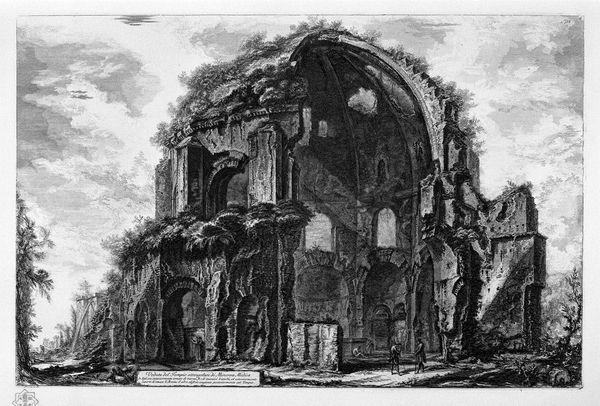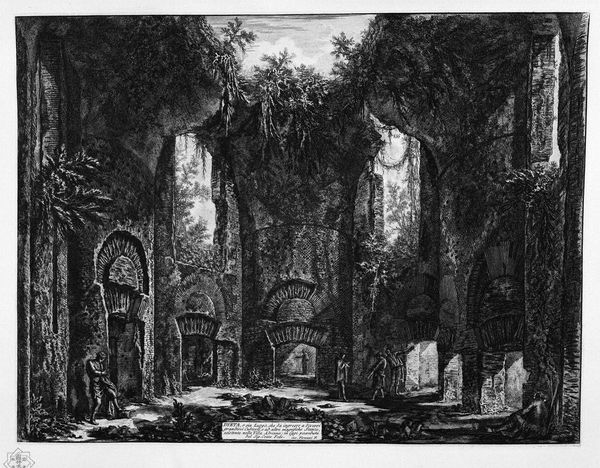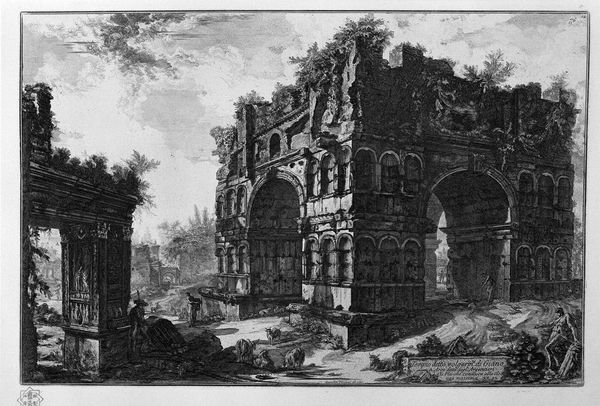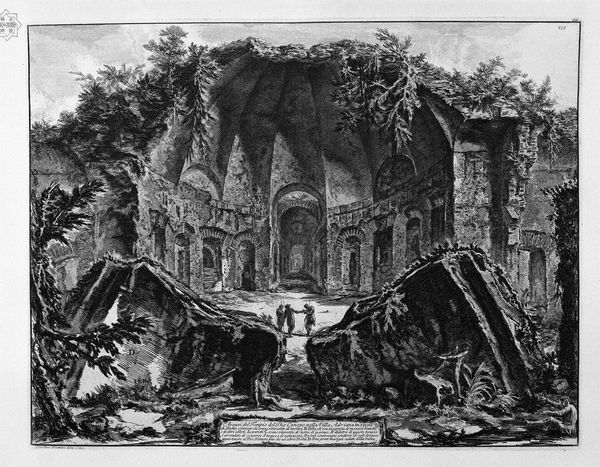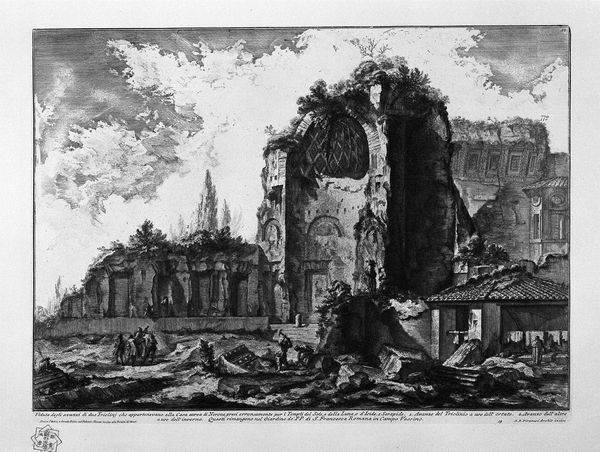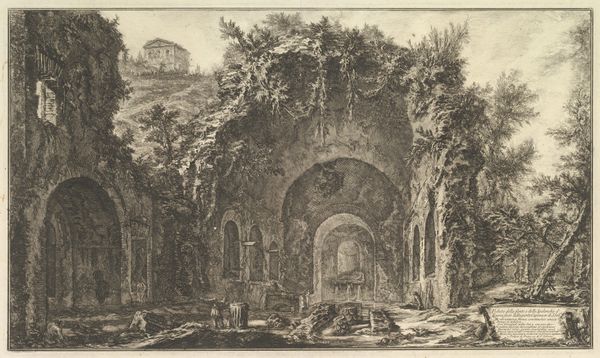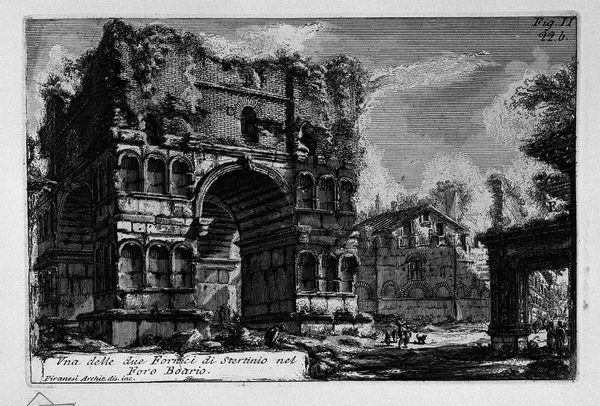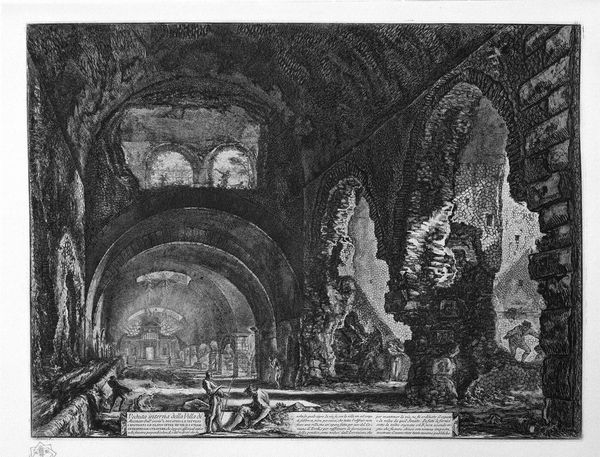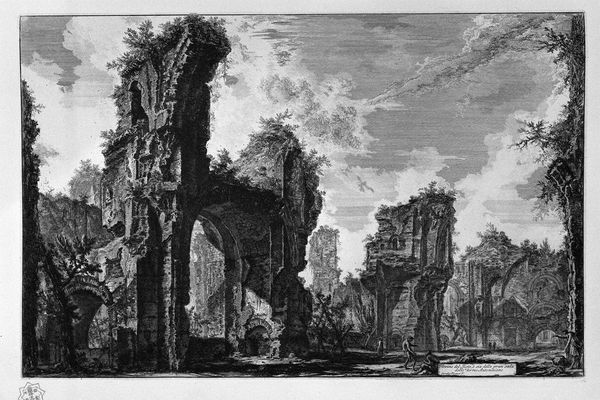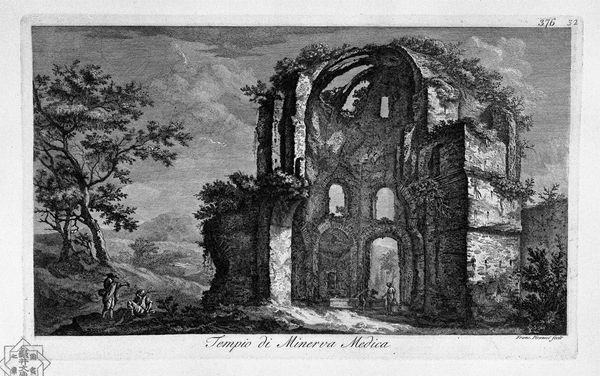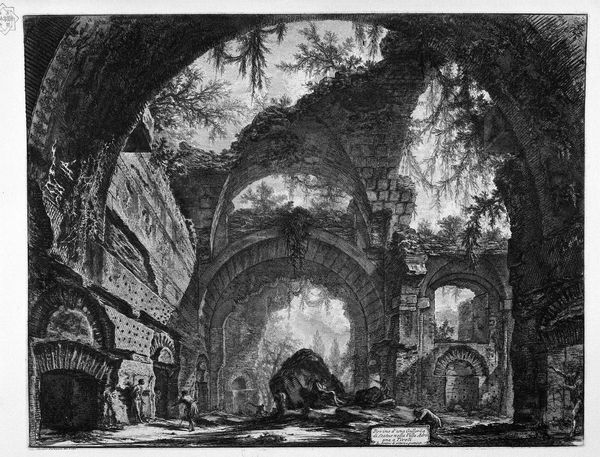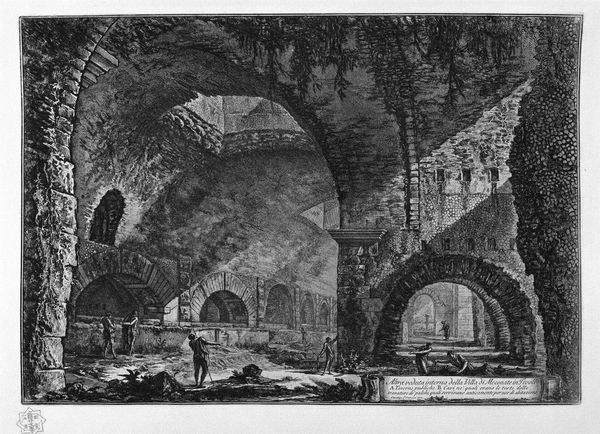
print, etching, architecture
# print
#
etching
#
landscape
#
romanesque
#
architecture
Copyright: Public domain
Giovanni Battista Piranesi made this etching called View of the Temple of Camene, a Roman water nymph, at some point in the mid-18th century. It shows the dilapidated ruins of a temple, overgrown with vegetation. Piranesi was not only an artist but also an antiquarian, deeply involved in the rediscovery and reimagining of ancient Rome. His prints weren't just neutral records; they actively shaped contemporary understandings of Roman history and architecture. By depicting these ruins in a state of picturesque decay, Piranesi romanticizes the past but also subtly critiques the present. The temple's ruinous condition can be seen as a commentary on the decline of institutions. Art historians use archaeological reports, period maps, and architectural treatises to reveal the complex relationship between art, history, and power. Art like this becomes a window into the social and institutional forces that shape artistic production and reception.
Comments
No comments
Be the first to comment and join the conversation on the ultimate creative platform.

